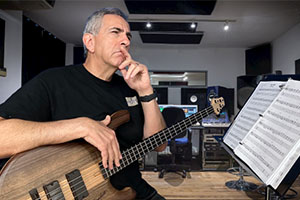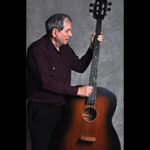How to play with determination, simplicity, and groove
By Jon Liebman
June 23, 2023
Too many people have the wrong idea of what it means to play bass. They start out with the best of intentions, “putting in the time” to practice, thinking they’re helping themselves.
The problem is that, in far too many cases, they’re working on the wrong things.
It takes time to learn bass and it takes diligent practice. So shouldn’t you be spending that time working on the things that will help you do the job of a bass player, namely, locking in with the drummer, setting the foundation for the band, and making the music feel good?
I had an awesome conversation the other day with bass legend Nate Watts, for this week’s FBPO interview. Having been in Stevie Wonder’s band for almost 50 years now, Nate knows a thing or two about what’s important when it comes to learning bass.
How determined are you?
“If you want to play, you got to be really determined,” Nate says. “That’s the first thing.”
No problem so far. Most of the people I’ve helped have the right levels of maturity, discipline, and life experience to understand that you can’t get something for nothing.
Don’t let that work against you, though. Sometimes there’s a tendency to try to take on too much all at once, and that exuberance can actually slow you down.
Keep it simple, at first
“Start simple,” Nate advises. “Learn simple stuff first and advance yourself as you go. Once you get the repetition in your head, it’ll come to you automatically.”
Don’t put too much emphasis on building technique just for technique’s sake. There’s a reason for practicing all those scales and modes, and it’s not just so you can play fast. Building good bass technique is so you have the ability to give the music what it needs when it needs it. It must be done in moderation, so, as Nate says, start simple.
Avoid “technique for technique’s sake”
“Get your technique together,” Nate says, “your technique that you want, that feels good to you and don’t bother you, okay? I’m almost 70 and I’m still playing. I still have a little tendonitis, but I won’t let it get the best of me. I put some… whatever I can put on it, to make it stop.”
And please don’t get caught up in the YouTube frenzy. There are a lot of videos of people doing all kinds of very impressive technical acrobatics on the bass, demonstrating amazing skill. If you want to play that stuff, fine. It’s fun to watch (to a point).
But that’s not what people want in a bass player.
Don’t be a bass exhibitionist
“One thing that I wonder sometimes,” says Nate, “with all the talent that’s out there…
Can you hold a groove?”
That’s it, in a nutshell. Are you laying down the right groove, one that helps the song and makes the music feel good? Are you supplying what’s needed from the bass player?
“We started out grooving,” Nate recalls of his younger days. “There’s a lot of cats that’s tops, kids doing great stuff, but I never heard them play with a band and groove. They’re exhibitionists, you know what I mean? And people don’t want to hear that. They want to hear something that’ll make you happy.”
Here’s your next step
How’s your grooving? How good is your understanding of what the bass player is supposed to do, and how well are you applying it to the music?
Let me show you how.
My lessons and courses in the Bottom Line Club will have you learning bass, building technique, and grooving, from day one. And you’ll have more fun than you ever imagined. I’ve helped over 130,000 people learn bass. Go ahead, take a chance. I won’t steer you wrong!
Join the Bottom Line Club here.





